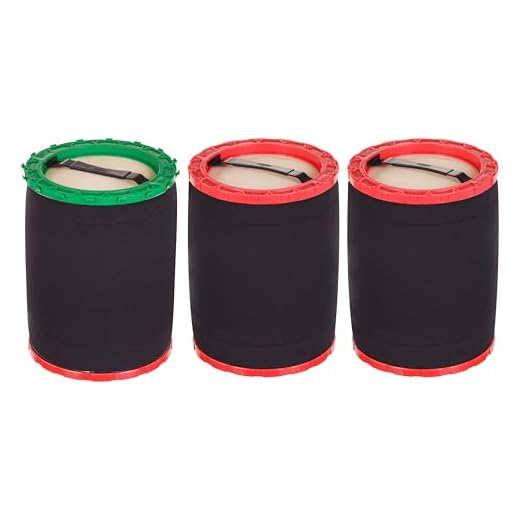When exploring small-scale hydropower systems for residential use, we recommend three options: microhydropower kits, impulse turbines, and reaction turbines. Microhydropower kits, with an output range of 100W to 30kW, are typically efficient between 50% and 70%, and installation costs can vary from $4,000 to $15,000. Impulse turbines, particularly Pelton wheels, excel in high-pressure environments, reaching efficiencies of 70% to 90%. Conversely, reaction turbines, like Kaplan designs, are ideal for low-head and high-flow conditions, often exceeding 90% efficiency. Each offers specific benefits tailored to different site conditions and energy needs, fostering sustainable solutions for residential energy production. Further insights await your exploration.
Key Takeaways
- Pelton Wheel Turbines: Ideal for high-pressure situations, these turbines can achieve efficiencies of up to 90%, making them excellent for residential energy generation.
- Kaplan Turbines: Best suited for low-head and high-flow environments, these reaction turbines offer efficiency exceeding 90%, maximizing energy output in various settings.
- Turgo Wheels: Versatile and effective in medium to high head applications, Turgo wheels adapt well to different water flow conditions, providing reliable energy.
- Impulse Turbines: Featuring simpler designs, these turbines, like the Jack Rabbit, ensure easier maintenance while maintaining 70-90% efficiency for residential use.
- Cost-Effective Solutions: Microhydropower kits range from $4,000 to $15,000, offering customizable options to meet specific energy needs and budgets for homeowners.



Best Microhydropower Kits
When it comes to finding the best microhydropower kits for our homes, we’ve got a variety of options that can cater to different energy needs and site conditions. These microhydropower systems typically range in power output from 100W to 30kW, allowing us to customize based on specific requirements. Many kits include hydro generators, turbines, and necessary accessories, ensuring a thorough solution for generating renewable energy from flowing water. The installation cost can vary between $4,000 and $15,000, depending on components and site specifications. With efficiency rates generally between 50% and 70%, well-designed kits utilize factors like head and flow to maximize energy conversion. Pelton wheel generators are particularly effective in high-pressure scenarios, boasting efficiency rates of up to 90%.
Top Impulse Turbines

Microhydropower kits often incorporate various types of turbines, and impulse turbines stand out for their efficiency and versatility. These hydroelectric turbines are particularly beneficial for high-head applications and low-flow conditions, providing substantial energy conversion options for residential use. Consider these key advantages:
- High efficiency: Impulse turbines like the Pelton wheel achieve efficiency rates between 70-90%.
- Versatility: Turgo wheels and Jack Rabbit turbines cater to different water head requirements, making them adaptable to various geographical settings.
- Ease of maintenance: The simpler design of impulse turbines allows for straightforward operational management, reducing downtime and costs.






Efficient Reaction Turbines

Although many homeowners might consider impulse turbines for their simplicity, efficient reaction turbines offer remarkable advantages for residential hydropower systems. These turbines convert the pressure of water into mechanical energy, maximizing efficiency often above 90% under ideal conditions. Particularly, Kaplan turbines, a type of reaction turbine, excel in low-head and high-flow scenarios, making them ideal for various residential settings. By maintaining constant contact with the water across all blades, they enhance energy extraction from the water flow, contributing to reliable energy generation. While they may be more complex and costly than impulse turbines, their efficiency and adaptability to specific hydrological conditions make efficient reaction turbines a compelling choice for small-scale hydropower, ultimately leading us toward sustainable energy solutions in our homes.
Frequently Asked Questions
How Big of a Hydro Turbine Is Needed to Power a House?
Imagine harnessing nature’s power for our homes! To determine turbine sizing, we must assess our energy needs, water flow, site specifics, installation costs, efficiency ratings, and environmental impact, while considering maintenance, grid connection, and regulations.
What Are the Disadvantages of Small Scale Hydropower?
When considering small-scale hydropower, we should recognize potential disadvantages like high initial investment, installation challenges, regulatory hurdles, site limitations, seasonal variability, and ongoing maintenance requirements which could impact energy output and long-term sustainability.
How Much Does a 10 Kilowatt Microhydropower System Cost?
When we consider a 10-kilowatt microhydropower system, installation costs can reach $30,000. While maintenance expenses are low, we must weigh equipment choices and site requirements against potential energy efficiency and return on investment for our community’s sustainability.
Can Hydropower Be Used in Homes?
Absolutely, we can harness residential hydropower for energy independence. It offers hydroelectric benefits, supports sustainability practices, and enhances energy efficiency. With a suitable water source, the installation process and maintenance requirements are manageable, minimizing environmental impact.




